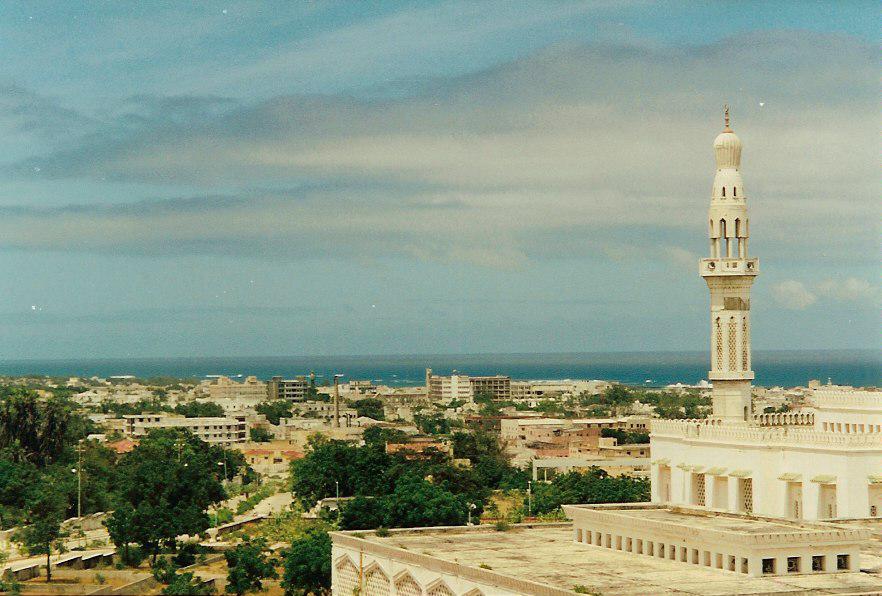Mogadishu, the capital city of Somalia, is located in the horn of Africa and bordering the Red Sea. The major religion is Sunni Muslim and the official language is Somali although Arabic, Italian, and English are all spoken there. Mogadishu’s 2009 population estimate was 1.3 million people.
Founded by the Arabs in the 10th century, Mogadishu became the capital and chief port of Somalia. Initially after their arrival, families of Arab and Persian descent ruled Somalia and fueled the widespread conversion to Islam. By the thirteenth century, Mogadishu became prosperous by trading gold, livestock, slaves, leather, and ivory.
In the late fifteenth and early sixteenth centuries the Muzzaffar Dynasty had dominated rule in Mogadishu and succeeded in defending the city against Portuguese invasion. However, by the next century, the Sultan of Oman conquered the city. In 1825 Mogadishu tried to overthrow Omani rule, and after refusal of aid from Britain, faced the challenge alone.
By 1871 the Sultan of Zanzibar gained control of Mogadishu and leased the city’s port to the Italians in 1892. In 1905 the Italians bought the port city, making it the capital of Italian Somaliland. Mogadishu, with a population of 94,000 became the capital of independent Somalia in 1960. The population grew rapidly in the 1960s and 1970s as the urban economy—which had initially been centered around exporting fruit, meat and animal hides, cotton, and sugar cane—expanded to include soft-drink bottling, textile production, and milk processing.
Despite the growing affluence in the city of Mogadishu, the country as a whole suffered from political instability under the dictatorship of President Mohamed Siad Barre who ruled the nation from 1969 to 1991. In 1989 as his authority was increasingly challenged, Siad Barre ordered his troops to occupy Mogadishu in the wake of anti-government demonstrations. Most of the city was left in ruins and its population suffered 50,000 fatalities after a four week rampage by the army. After his overthrow, Said Barre fled Mogadishu in 1991, leaving behind a destroyed nation with a reputation for violent rule. The unstable political environment was worsened in 1992 when an extreme famine hit Somalia.
The United Nations intervened to ensure the equal distribution of aid and prevent the corrupt new government from abusing its power. The mission was unsuccessful and the UN left the port city in 2002 after one of its officials was kidnapped at gunpoint. By 2008 officials estimated that nearly half of the city’s residents, over one million people, had fled to the countryside. Since 2008 nearly 3,000 African Union peacekeeping troops have patrolled the city to try to maintain order and provide medical aid.
Although Mogadishu was once a powerful and commercially important port city, more than two decades of violence and government instability have caused what many experts fear may be irreparable damage to its inhabitants, its economy, and its infrastructure.

